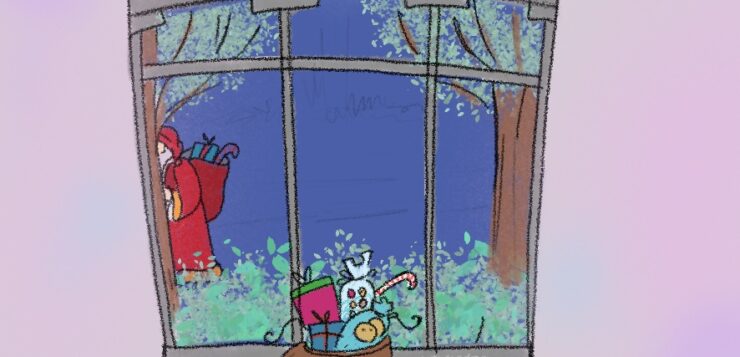The celebration of St. Nicholas isn’t particularly an unheard one. Most European countries celebrate St. Nicholas in some way or form. While St. Nicholas day varies, with most Western-European countries celebrating on either the 5th or 6th, in Eastern-European countries, the day dedicated to the great Saint also happens on the 19th. Yet, in the United Kingdom, St. Nicholas is a figure we talk very little of, and most are probably unaware that this once very living figure is why Christmas is what it is today.
A quick summary of St. Nicholas is what follows: once a living man, a Patron Saint who often left gifts for those in need, St. Nicholas died almost over 1700 years ago. Yet his acts of generosity spread across the world, a longevity that has maintained throughout history and warped him into the figure we recognise as Father Christmas or Santa Claus. While the common myth is that Coca-Cola made Santa red, St. Nicholas’s longstanding scarlet coat depiction put this rumour to bed (Coca-Cola only helped thrust the red appearance into the mainstream). So, if you’re wondering where Santa Claus came from because you’re pretty sure a slightly large man in a red coat didn’t turn up at the birth of Jesus, there’s your answer.
So, what is St. Nicholas day? Again, it’s a tradition that varies, but one that the German in my mum has always treasured. Essentially it involves leaving shoes outside your front door (or, as my Hungarian housemate adapted my version to be, in the window sill) in the hope of finding a little something in your shoes in the morning. The idea is that on the night of December 5th, St. Nicholas would visit, placing chocolate in the shoes of all the good children and sticks in the shoes of all those who were bad. Those with chocolate were almost guaranteed presents at Christmas (which most of Europe celebrate on the night of the 24th, unlike Britain’s morning of the 25th celebration). For those with sticks, it served as a warning that time was running out to make it onto Santa’s good list. It’s a celebration that helps raise the Christmas spirit, bringing a Christmas treat a little earlier in December.
It’s a celebration I hold close to my heart, more so as an adult than as a child. It’s one that I’ve tried to do every year, even after moving out. Presents are great, but waking up to find chocolate in your shoes (with a few sticks thrown in for good measure) always has a novelty that will never wear off. It’s not like Christmas where children are comparing all the gifts they got, it’s just a nice little confirmation that they’ve been good (even if they “haven’t”). It’s a small thing, but one that I’ve never understood why the United Kingdom never adopted. Perhaps it’s just one in a long list of things that we as a country have oddly distanced ourselves from.
Although, the best thing about St. Nicholas day is its variation. No country treats St. Nicholas in the same way. What is chocolate in Germany is nuts and oranges in Hungary; in fact, the tradition is so varied that it can change from household to household, while the core of celebrating the wintery festive period remains. While its origins, for most, are murky, its spirit lives on in one of my favourite celebrations of the year.




